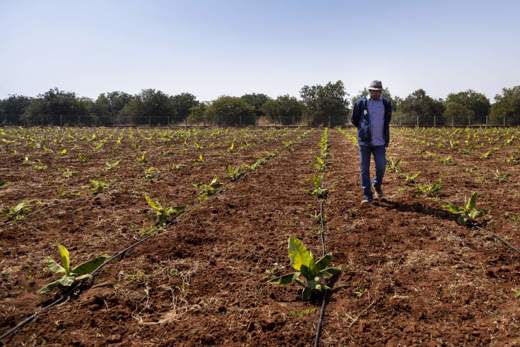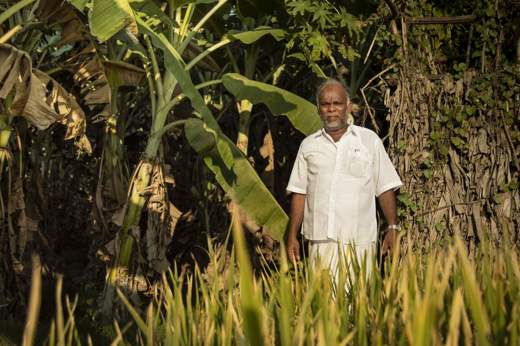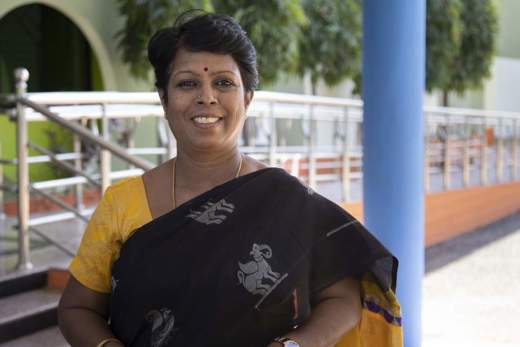New technology has woken up the world’s largest banana producer and, in 2018, the first Indian bananas were exported to Europe. Cold-chain technology has proven a game changer for Indian banana farmers, whose income has doubled and even tripled, while wastage has been brought down by almost 20%.

Every third banana on the earth is produced in India. A third of this number, 9 million tons per year, are produced within the state of Tamil Nadu. But a third of these bananas never make the journey from farmer to consumer.
Over the years, farmers of Tamil Nadu have witnessed a post-harvest loss of 30%. The banana farming industry was not able to utilize the vast potential of their harvest, and the bananas were wasted in a country in urgent need of good quality food for 300 million people.
Cold chain as a game changer
But things have changed since Danfoss started a task force with the Confederation of Indian Industry (CII) to address the challenges of food loss – focusing on bananas.
The task force started out by identifying three major blocks: The lack of good agricultural practices at the pre-harvest stage, poor post-harvest management, and a disconnect to the market.
Danfoss has worked primarily on two interventions, based on the company’s global expertise in cooling.

Firstly, pre-cooling intervention. Once harvested at the farm, pre-cooling and cold storage of the bananas extends the life and quality of the produce. Secondly, ripening chambers have resulted in better control, to ensure the bananas are kept at the right temperature until they reach consumers.
“These two interventions have resulted in three times higher value for the banana farmers and a wastage reduction of nearly 20%. What has also been achieved by helping farmers is that today, Indian bananas are available in Europe. A thing that would have been unthinkable a few years back,” says Ravi Purushothaman, President of Danfoss India.
He sees cold chain as a game changer:
“We have succeeded in making a significant impact for the farmers and on the Indian economy. The Prime Minister of India wants to double farmers’ income, but I think in this case, we have actually helped triple farmers’ income.”

The dream of banana farmers
He was the greatest banana farmer of them all: Mr Sivamani’s father held the Guinness World Record of 165 tons of bananas per acre. Today, his son runs the farm on the fertile soil of the Cumbum Valley in Tamil Nadu. And new technology has been a game-changer for the farmer.
“Ten years ago, we had 10 employees. Today, 200 families are dependent on this farm. New technologies like cold chain and reefer containers have made it possible for us to extend the quality and shelf life of the bananas, and we have exported the first bananas to Europe. My dream is that soon we will export to the whole world. That will enable us to double the capacity at the farm and support 400 families,” Mr Sivamani says.

In the village of Thottiam, Tamil Nadu, Mr Marudapillai, who is one of the farmers who hasn’t yet benefited from cold chain, has a dream for his small farm that is as clear as the sky over his plantation.
“I want to be a progressive farmer. I will be first in line when I get the opportunity. It would change my family’s life.”
Mr Marudapillai and other small, traditional farmers have been reluctant to adopt the new technologies, but witnessing how the cold-chain revolution has changed the lives of his fellow farmers in Tamil Nadu has changed his mind.
“We understand that technology could bring our post-harvest loss of 20-25% down to even less than 5%,” he says. “That would mean the world for us farmers and the consumers would get even better bananas.”

Cold chain means control over the crops
Dr S. Uma is the center’s director and she explains that cold chain is ultimately about giving the millions of farmers in India control over their crops.
“India is a vast country and even sending bananas from the south to the north becomes equivalent to exportation – it is a huge process. So here, cold chain has a major impact. We have reached the stage where we must showcase the rich diversity of the banana. People should be exposed to what they have not seen. Then they will appreciate,” says the director, continuing:
“Cold chain allows us to keep the bananas at the right temperature so that they stay green for longer. And then, when there is a demand, we can release them onto the market. This is how cold chain has come into the picture and the government has supported cold rooms all over the country. This has given us the confidence that bananas can be exported to the whole world.”
“This is only the beginning”
The first bananas from India, from the state of Tamil Nadu, were exported by ship in late 2018 to the eternal pride of Mr A.P. Karuppiah. He was the very first farmer the CII task force and Danfoss collaborated with, and today he is the Chairman of Tamil Nadu Banana Growers Federation & Tamil Nadu Banana Farmers Company.
The federation was established on the recommendation of the task force and as one of the major drivers for bringing farmers together, getting scale and connecting to hitherto unexplored markets.
Mr Karuppiah has witnessed a tripling in the income of fellow banana farmers, and he sees the start of a new era:
“Previously, we did not know that we had to take care of the produce post-harvest as well. We were concentrating on producing more. Now we understand the use of post-harvest management techniques. This has enabled us to reduce losses as well as getting better prices for our produce because of better quality. Knowledge transfer has been immense thanks to the work undertaken by the task force. European markets were not known to us previously. However, this is only the beginning.”

Cold rooms
Make the right choice for optimum protection of perishables, efficient operation and long lifespan.


